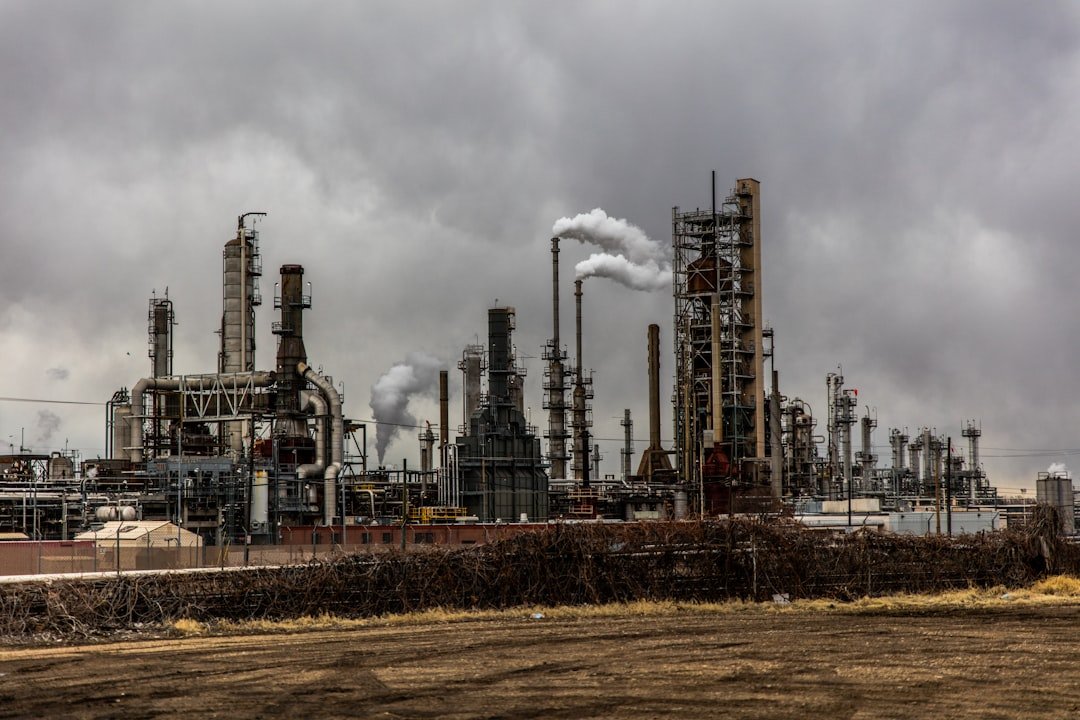The 2024 List of the Most Polluted Cities Worldwide The list of the most polluted cities for 2024 serves as a sobering reminder of the environmental crises that many urban areas are facing as the world struggles with the ongoing issues of urbanization and climate change. Every year, a number of environmental groups & academic institutions compile this report, which identifies cities with dangerously high air quality that endanger public health and welfare. Not only does the list depict the current level of air pollution, but it also emphasizes how urgently effective policies and interventions are needed to address this serious problem.
Key Takeaways
- The 2024 list of most polluted cities worldwide highlights the ongoing issue of air pollution in urban areas.
- Factors contributing to air pollution in urban areas include industrial emissions, vehicular pollution, and construction activities.
- Living in the most polluted cities can lead to various health implications such as respiratory diseases, cardiovascular issues, and reduced life expectancy.
- Efforts to combat air pollution in these cities include the implementation of stricter emission standards, promotion of public transportation, and the use of renewable energy sources.
- The comparison of the 2024 list to previous years’ most polluted cities shows both progress and ongoing challenges in addressing air pollution.
- Air pollution has a significant economic impact on these cities, including healthcare costs, decreased productivity, and damage to infrastructure.
- Individuals can protect themselves from air pollution in these cities by using air purifiers, wearing masks, and staying indoors during high pollution days.
- There is potential for improvement in air quality in these cities in the coming years through continued efforts to reduce emissions and promote sustainable urban development.
Asian, Middle Eastern, and African cities top the rankings in 2024; some well-known cities make a comeback because of ongoing pollution issues. The information shows that automobile exhaust, industrial emissions, and other pollutants interact intricately to cause declining air quality. The problem of controlling air pollution grows more pressing as urban populations continue to rise.
This article explores the causes of air pollution in these cities, the effects it has on locals’ health, and the initiatives being taken to address this widespread problem. The issue of air pollution in cities is complex & influenced by many different factors. Among the main causes is industrial activity. Heavy industries that emit large volumes of particulate matter and harmful gases into the atmosphere are located in many of the cities on the 2024 list.
Lack of strict regulations frequently causes factories, power plants, and other manufacturing facilities to operate, resulting in uncontrolled emissions that negatively affect air quality. This problem is made worse by insufficient monitoring and enforcement systems, which permit pollution levels to increase unchecked. Vehicle emissions are another important consideration. There are an increasing number of cars on the road as urban populations rise. The daily occurrence of traffic congestion in many cities results in higher emissions from buses, trucks, & cars.
| Rank | City | Country | PM2.5 Level (µg/m³) |
|---|---|---|---|
| 1 | Dhaka | Bangladesh | 97.1 |
| 2 | Delhi | India | 96.0 |
| 3 | Karachi | Pakistan | 84.8 |
| 4 | Lahore | Pakistan | 79.8 |
| 5 | Chengdu | China | 73.6 |
| 6 | Beijing | China | 69.0 |
| 7 | Delhi | India | 68.9 |
| 8 | Mumbai | India | 68.0 |
| 9 | Kolkata | India | 64.9 |
| 10 | Chennai | India | 64.1 |
An excessive amount of air pollution is caused by older cars that do not adhere to current emission regulations. The issue is further exacerbated by the fact that residents are frequently forced to rely on private vehicles due to insufficient public transportation systems. Urban dwellers face significant health risks due to the toxic cocktail created by industrial emissions and vehicle exhaust. Living in some of the most polluted cities in the world has significant and long-lasting effects on one’s health. High air pollution exposure has been connected to a number of dangerous medical disorders, such as heart issues, respiratory disorders, and even early mortality. Particularly worrisome is fine particulate matter (PM2.5), which can enter the bloodstream and travel deep into the lungs.
Research has indicated that prolonged exposure to PM2.5 can result in decreased lung function, exacerbations of asthma, and chronic bronchitis. Also, there is an even higher risk for vulnerable groups like children, the elderly, and people with underlying medical conditions. Older adults who are exposed to polluted air may be more susceptible to heart attacks and strokes, while children may have developmental problems & decreased lung capacity.
It’s also important to consider the psychological effects of living in a polluted area; stress and anxiety brought on by health issues can further lower the standard of living for city dwellers. Many cities are putting different air quality improvement strategies into place in response to the concerning levels of air pollution. Governments are starting to understand how important it is to impose strict laws on vehicle exhaust and industrial emissions. For example, some cities have imposed more stringent vehicle emission regulations & provided incentives for the use of hybrid or electric vehicles. Also, there is growing support for urban planning projects that encourage green areas and lessen dependency on fossil fuels.
The fight against air pollution also heavily relies on public awareness initiatives. Numerous organizations are putting in endless effort to inform locals about the causes and consequences of air pollution, as well as to promote community participation in cleanup initiatives and support for improved laws. Also, improvements in technology are being used to better monitor the quality of the air.
In addition to helping residents know when it is safe to go outside, real-time data collection enables prompt responses to pollution spikes. There are some noticeable trends when comparing the 2024 list of the most polluted cities to the rankings from prior years. Through coordinated efforts & changes to policies, some cities have improved their air quality significantly, while others have seen little change or even seen their pollution levels worsen. For instance, because of continuous industrial activity and vehicle emissions, cities like Delhi and Lahore have continuously been among the most polluted for a number of years.
In contrast, a few cities that were previously on the list have effectively put policies into place that have resulted in notable improvements in the quality of the air. For example, Beijing has advanced significantly by promoting electric public transportation options & imposing stronger rules on the burning of coal. This comparison stresses that while progress is achievable, it necessitates consistent dedication and action, highlighting both the difficulties and achievements encountered by urban areas in their battle against air pollution. How it affects tourism and investment. Excessive pollution can discourage investment and tourism because prospective companies and tourists may be hesitant to visit places with bad air quality. The impacted cities may experience a halt or slowdown in economic growth as a result.
its impact on productivity and healthcare systems. Also, the expenses of treating illnesses linked to pollution can significantly strain local healthcare systems and taxpayers. Also, the workforce may be significantly impacted by productivity losses brought on by health problems associated with air pollution.
Employees with respiratory issues or other conditions linked to pollution may miss more work or be less productive. A danger to livelihoods and economic output. For companies operating in polluted areas, this has an impact on overall economic output in addition to individual livelihoods. As a result, controlling air pollution is not only necessary for the environment but also for many urban areas’ economic viability. Long-term solutions to air pollution require systemic changes, but people can also take preventative measures to lessen its negative effects.
Using apps or websites that offer real-time data on local air quality levels is one efficient tactic. People can limit exposure during peak pollution periods by planning their outdoor activities accordingly and being aware of when pollution levels are high. The air quality in homes & offices can also be greatly enhanced by using air purifiers indoors. Residents can live in a safer environment thanks to these devices’ ability to filter out allergens and dangerous particles.
On days with high pollution, wearing masks made to filter out particulate matter outside can offer an additional degree of protection. In addition, people can promote cleaner air by lending their support to neighborhood projects that lower emissions and encourage sustainable lifestyles. Even though air pollution in many cities presents formidable obstacles, there is hope for a major improvement in air quality in the years to come. As more people become aware of the negative effects pollution has on their health, more cities are giving environmental policies that try to lower emissions from transportation and industrial sources priority.
Cities have an opportunity to move away from fossil fuels and invest in cleaner alternatives as a result of the global shift towards renewable energy sources. Also, technological developments remain essential in the fight against air pollution. Urban areas can become cleaner with the aid of advancements in smart city infrastructure, renewable energy technologies, & electric vehicle technology.
In summary, although the 2024 list of the world’s most polluted cities serves as a sobering reminder of persistent environmental problems, it also emphasizes the possibility of change through teamwork and creative solutions.
Cities can strive toward a cleaner future for their citizens by tackling the underlying causes of air pollution and giving public health initiatives top priority.
According to a recent article on addressing global warming solutions and strategies, the alarming data on the top 10 most polluted cities in the world for 2024 highlights the urgent need for action to combat climate change. The article discusses various ways in which individuals, communities, and governments can work together to address the root causes of pollution and implement sustainable practices to protect the environment for future generations. It emphasizes the importance of harnessing the power of renewable energy as a key solution to reducing greenhouse gas emissions and mitigating the impacts of global warming.
FAQs
What are the top 10 most polluted cities in the world in 2024?
The article lists the top 10 most polluted cities in the world based on air quality data for the year 2024.
What factors contribute to the pollution in these cities?
The pollution in these cities is primarily caused by industrial emissions, vehicular pollution, construction activities, and geographical factors such as weather patterns and topography.
What are the health implications of living in these polluted cities?
Living in these polluted cities can lead to various health issues such as respiratory problems, cardiovascular diseases, and a higher risk of lung cancer. It can also exacerbate existing health conditions.
What measures are being taken to address the pollution in these cities?
Local governments and environmental agencies are implementing measures such as stricter emission standards, promoting the use of public transportation, investing in renewable energy sources, and implementing green initiatives to reduce pollution levels.
How does the pollution in these cities impact the environment?
The pollution in these cities can have detrimental effects on the environment, including damage to ecosystems, soil and water contamination, and negative impacts on wildlife and biodiversity.
Are there any initiatives in place to improve air quality in these cities?
Several initiatives are being implemented, such as the introduction of electric vehicles, the expansion of green spaces, the promotion of sustainable urban planning, and the enforcement of stricter environmental regulations.
What can residents do to protect themselves from the effects of pollution in these cities?
Residents can protect themselves by using air purifiers indoors, wearing masks when outdoor air quality is poor, staying informed about air quality levels, and advocating for cleaner air policies.
How does the pollution in these cities compare to global air quality standards?
The pollution levels in these cities often exceed the air quality standards set by the World Health Organization (WHO) and other global environmental agencies, posing significant health risks to residents.



